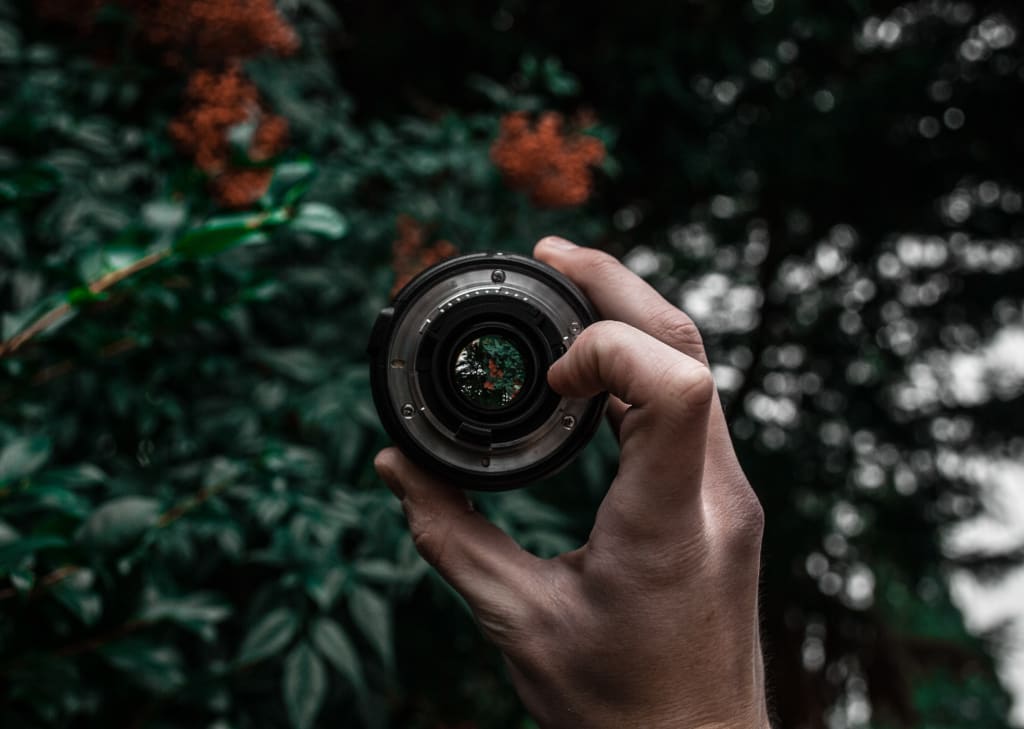Best Fujifilm Lenses for Landscape Photography
When you're trying to capture the beauty of Mother Nature, don't leave home without the best Fujifilm lenses for landscape photography.

Even the most dedicated camera enthusiasts want more lenses (Gear Acquisition Syndrome is real), but most of the experienced ones stick to one or two. Did you know that Henri Cartier-Bresson only used a 50mm lens his entire career? And even well-known photographer Eric Kim keeps his bag light by only using one lens at a time. In the days of smartphone photography where sensors easily rival DSLRs, lenses have become more important than ever if you want to get ideal images.
The best Fujifilm lenses for landscape photography offer a variety of different features to those looking to capture the real beauty of the world around us. Whether you're an amateur trying to figure out the difference between wide angle lenses and telephoto lenses or a more seasoned photographer wanting to know which lens is best for you, Fujifilm lenses for landscape photography is the right place to start. From rolling plains to a serene lake or the roaring waves, the detail and professionalism of the photos beautiful enough to be printed into photo books.
Wide Angle Lenses
Wide angle lenses are those which use distortion to be able to see more through the lens. Anything less than a 24mm is considered to be a wide angle. These are the most preferred type of Fujifilm lenses for landscape photography because the distortion created helps emphasize the roundness of the earth's horizon and create a feeling of open space.
Zoom lenses have gotten a bit of a bad reputation over the years, but now that landscape photographers can expect the same quality there's no reason to force yourself to stick to one focal length. The 10-24mm gives you enough range to capture ultra wide angle shots and wide angle with a good aperture size.
It's built with 14 elements, including 4 aspherical and has both internal focusing and a minimum focusing distance of 0.24m.
It includes image stabilization, but at 410g it is a little hefty, though you're paying for a quality lens. It has weather resistance features and while the 24mm is a little soft, the only real downside for landscape photographers is that the aperture ring is not marked.
A 10-24mm will cover almost all of your landscape photography needs so this is perfect if you're going with the “one lens” philosophy.
A nice prime that will give you a good wide view without the distortion of a fisheye (if you're working with FF), this lens is a great choice. It has autofocus, reasonably low distortion and is versatile enough to work well for landscape photography.
This is one of the lightest wide angle lenses you'll find at a mere 235g and has a compact shape. It's not as versatile as the 10-24mm but you do get that nice low f/2.8 aperture and a range up to f/22. It has a tiny 0.18m minimum focus which makes it especially versatile if you want to use it for more than just landscape photography.
No weather proofing, but the optical quality is excellent and it's very sharp for a wide angle lens. While the 2.8 is expectedly a little soft, it's still one of the best Fujifilm lenses for landscape photography.
Probably one of the most written about Fujifilm lenses for landscape photography, it's optically as good as the 14mm, though it weighs over 100g more (375g). While this stops the lens from being so comfortably light, it does have 9 point weather resistance which makes all the difference if you know you're going to be outdoors.
The glass has Nano-GL coating to reduce flare and a minimum focus distance of 0.15m, closer by an inch to the 14mm. There's a depth of field scale if you want to manual focus, and a good bokeh thanks to that wide 1.4 aperture and a better low light capability than the 14mm for the same reason.
If you're stuck between the zoom 10-24mm and a prime then get the 16mm as it's more versatile with that lower aperture and you won't see much of a difference in the focal length for landscape photography.
Normal Lenses
While most landscape photographers jump between wide angle and telephoto lenses, normal lenses are often a good compromise on price and on flexibility. If you need a lens who can do more than just landscapes, these come in useful.
While it's rare that you'll hear a lens is too light, this is so light it feels like a toy. This is because of it's all-plastic construction and is the smallest lens they offer at 195g. Without weather resistance and a sturdy body, it runs the risk of breaking quicker than the others but there still are some great features about it. It's fairly sharp up until about f/8 but the widest f/3.5 is soft and will be a disappointment if you try and shoot wide open.
This is one of the more useful Fujifilm lenses for landscape photography because it goes from normal to true wide rather than just dipping in at 18mm like the standard kit lens.
There is no aperture ring and no OIS which limits it somewhat, but the compromise is not having to switch between lenses.
The 18-55mm “kit lens” range is often avoided by many photographers because of the very notion that kit lenses are inferior, yet they still take good images. The 2.8 aperture on this puts it's functionality far beyond the standard kit lens, and while it's a little bigger than the 16-50 at 310g, it's much more solid and better built. It also has an aperture ring and OIS putting it firmly ahead.
Not only that, but landscape photographers will appreciate the weather resistance and 14 elements, including one ultra-low dispersion to help with aberration. It's a versatile zoom lens that has a fast autofocus motor and image stabilization that is ideal for scene photography, as well as landscapes.
This is an outlier when it comes to lenses for landscape photography, and admittedly, it's probably one of the least useful because of the focal range it's covering. It's just a little too “normal” but it will give you the flexibility to shoot landscapes and just about everything else in one lens.
The quality is a bit mixed, which goes back to the old prime vs zoom lens debate, but fortunately for landscape photography the wide end is where it works best.
It's chunkier than the others at 490g but a waterproof barrel and weather resistant seal in 20 places means that nothing is getting into this. It is slow, though. So if you've been used to fast primes then this is going to be frustrating but it's a compromise for being able to get greater variety.
Telephoto Lenses
The word telephoto is often mistaken as a synonym for zoom by amateurs. A telephoto lens means one that is outside of the normal focusing range which also includes wide angles yet the term is only colloquially applied to lenses with long focal distances in most vernacular. A telephoto lens is better for being able to zoom in close on specific elements on a landscape rather than trying to capture the whole picture. These lenses have to be mounted on a tripod if you want image stabilization, at these focal distances there's no hand holding and getting a crisp landscape image.
This is an especially light telephoto Fujifilm lens for landscape photography considering it's only 375g. The downside is you're sacrificing many features to get that, including an aperture ring and a plastic body much like the 16-55mm. The plastic mount will degrade quickly which is what makes it difficult to recommend, but the weight is really the selling point if you're going to be trekking or carrying heavy gear to reach a particular spot.
The quality of the optics isn't horrible for a lens like this. Since landscape photography doesn't necessarily require a fast lens, the compromise of the 4.5 often means lower quality glass so be wary of adding cheap filters if you want to keep image quality.
As you can tell, this is almost the exact same focal length as the previous but it's a significant step up. This is a great either/or situation because you can pick based on your landscape photography needs. The OIS gives you the missing aperture ring and also has an option for weather sealing, however it also adds a lot of weight. At 580g, this is a significant difference if you're going to carry these lenses for any extended period.
That being said, the optics are better than the XC too, and you can even squeeze a telecoverter on for a little extra distance.
A long reach can be really useful if you don't want to crop your images in pp. The issue with most super telephoto lenses like this is that the usable focal length isn't great and the maximum ranges are often very soft. At 1375g it's a monster, so if weight is a factor you probably don't want to bring this. However, with an option to add a teleconverter to increase the focal distance further (up to 800mm), it's certainly going to cover most images that you need distance for.
If you don't mind the weight, it's a reasonable price and since it's weather resistant and has image stabilization, it's a good choice for this big of a focal length.
While it isn't strictly a Fujifilm lens for landscape photography the Rokinon/Samyang 12mm 2.0 is really worth looking into. It's especially good at night photography and as a third party lens it's a quarter of what you'll pay for some of the Fujinon ones and it does come in a Fuji X mount.
The optics have a Nano Crystal Coating which improves light transmission and helps lower reflections/refractions/abberations and ghosting. A 2.0 maximum widest aperture will give you better speed and low light with an inner focusing system which will let you add filters or teleconverters.
Yes, this is a prime, but compared to the others you've got a wider aperture closer to the 10-24mm's maximum without sacrificing 2 stops of aperture to get it.
Which of these is the best Fujifilm lens for landscape photography?
The answer is – it depends.
Most photographers will want a combination to cover all the focal distances. Ideally a wide, normal, and telephoto combination should give you that coverage. While the Rokinon is an added bonus to these (and more budget friendly), it's not essential unless you're doing more night photography and most of the time you'll be able to get away with the Fujinon 16mm 2.8 if that's the case.
The 10-24mm is by far one of the most versatile Fujifilm lenses for landscape photography if you're determined to go with OEM, but if you want to be able to get up close and personal, you're going to lose out because of that narrow focal length. Whatever you decide, the right lens is one of the main things you should carry in your camera bag.
About the Creator
Lenny Legman
Life is one long party and NYC is my club. I listen to stories, imagine and write them as I see them.






Comments
There are no comments for this story
Be the first to respond and start the conversation.